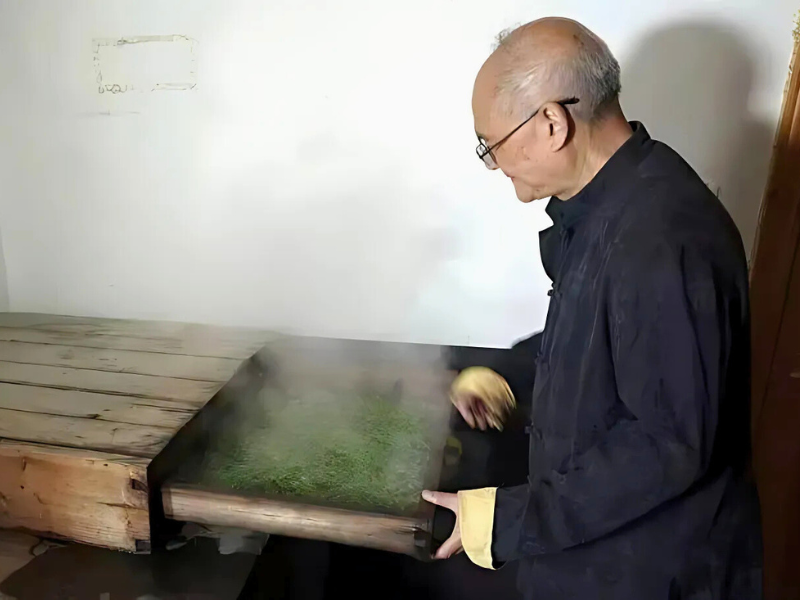
Picking and Processing Techniques of Steamed Green Tea-Enshi Yulu

The Enshi region of Hubei Province has a mild climate, abundant rainfall, and is often shrouded in mist. The Qingjiang River embraces the mountains below, while gentle slopes, broad valleys, and deep, fertile, sandy loam soil create an excellent ecological environment. This environment not only promotes the healthy growth of tea trees but also boosts their metabolism, resulting in particularly rich chlorophyll, protein, amino acids, and aromatic substances, making it an excellent source for producing Yulu tea with superb color, aroma, taste, and appearance.

This tea is made from dark green single buds that are steam-killed. Enshi Yulu Queshe tea has stringent picking and processing requirements. The buds and leaves must be tender and uniform. The finished tea has tight, slender, bright green, and uniform straight strands, shaped like pine needles. The tea liquor is clear and bright, with a fresh aroma and a sweet, mellow taste. The leaves, after brewing, are jade green. Its prominent characteristic is the "three greens": emerald green tea color, jade green liquor, and tender green leaves.
The production process involves steam-killing, followed by complex shaping steps to make the Yulu tea smooth, lustrous, and straight. The tea requires carefully graded fresh leaves with short internodes, uniform growth, and a bright green color. The production method includes steaming, air-drying, light firing, rolling, fine rolling, and drying. Steaming is done at 100℃ for 40-50 seconds, followed by rapid cooling with a fan to remove moisture, a process called "water drying." After cooling, the leaves are heated and shaped in shallow trays to evaporate water and loosely roll the strands, a process called "shoveling light fire." Then, rolling and fine rolling are performed to make the tea smooth, tight, slender, and straight. Shaping is mainly done by hand-rolling, using movements like scooping, rolling, lifting, and twisting to make the tea strands tight, slender, and round. The rolling force is reduced when the tea is 90% dry. Finally, the tea is dried in a baking cage, and yellow leaves, broken pieces, thick strands, old stems, and other impurities are removed. The tea is then wrapped in mulberry bark paper and stored in earthenware jars.
Nowadays, the production of Enshi Yulu, while still using steam-killing, employs more refined techniques. "Shaping and polishing," for example, is a crucial step in creating smooth, lustrous, straight, and tight Yulu tea with clear, bright liquor, a rich aroma, and a mellow taste. This process is divided into two stages. The first stage involves hand-rolling 0.8-1 kg of lightly fired leaves on a 50-80℃ baking oven. With palms facing each other, thumbs up, and fingers slightly bent, the tea leaves are held and rolled in one direction, with the right hand moving forward and the left hand backward. The tea clumps are continuously dispersed, shaping the leaves into long, thin, and round strands. When about 70% dry, the process moves to the second stage. This stage employs four alternating techniques: scooping, rolling, lifting, and twisting, to further shape and polish the tea until it reaches the desired dryness. The entire process takes 70-80 minutes.
